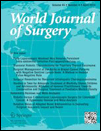Understanding Disparities in Surgical Outcomes for Medicaid Beneficiaries
Abstract
Background
Few studies have evaluated whether outcome disparities between Medicaid and private insurance beneficiaries are driven by the hospital at which the patient receives care. The purpose of this study was to evaluate the effect of the hospital on surgical outcomes in Medicaid beneficiaries.
Methods
We identified 139,566 non-elderly Medicaid and private insurance beneficiaries undergoing general, vascular, or gynecological surgery between 2012 and 2017 using a statewide clinical registry in Michigan. We calculated risk-adjusted rates of complications, readmissions, emergency department (ED) visits, and post-acute care utilization using multivariable logistic regression, accounting for patient and procedural factors. We then evaluated whether, and to what extent, the hospital influenced outcome disparities between Medicaid and privately insured beneficiaries.
Results
Risk-adjusted rates for all outcomes were higher in Medicaid beneficiaries. For example, overall post-discharge ED visit rates were 14.3% (95% CI 13.7% to 14.9%) for Medicaid compared to 7.5% (95% CI 7.1% to 7.9%, P < 0.01) for private insurance beneficiaries. Hospital factors explained 3.9% of the observed difference in complication rates between Medicaid and private insurance beneficiaries. In contrast, hospital factors explained a greater proportion of the disparities in readmissions (30.6%), ED visits (33.0%), and post-acute care utilization (16.1%). Results were similar when restricting the study population to elective cases only.
Conclusions
Hospital factors account for a significant proportion of the disparities in post-discharge resource utilization between Medicaid and private insurance beneficiaries. Policies aiming to improve the quality and equity of surgical care for Medicaid beneficiaries should focus on the post-discharge period.




